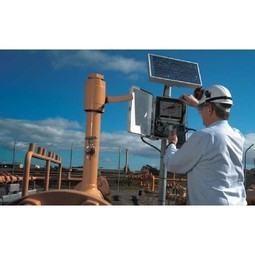Customer Company Size
Large Corporate
Region
- America
Country
- United States
Product
- COMSOL Multiphysics
- MCalibration
- PolyUMod
Tech Stack
- Finite Element Method
- Structural Mechanics Module
- Nonlinear Structural Materials Module
- Hybrid Mesh
Implementation Scale
- Enterprise-wide Deployment
Impact Metrics
- Cost Savings
- Productivity Improvements
- Customer Satisfaction
Technology Category
- Analytics & Modeling - Predictive Analytics
- Analytics & Modeling - Real Time Analytics
Applicable Industries
- Utilities
- Construction & Infrastructure
Applicable Functions
- Maintenance
- Quality Assurance
Use Cases
- Predictive Maintenance
- Process Control & Optimization
- Structural Health Monitoring
Services
- Software Design & Engineering Services
- System Integration
- Testing & Certification
About The Customer
Gas Technology Institute (GTI) is a research and development organization based in Illinois, committed to advancing new energy and natural gas technologies. GTI focuses on various sectors, including the investigation of squeeze-off distances for polyethylene (PE) gas pipelines. The organization aims to improve the efficiency and accessibility of gas pipeline maintenance procedures. GTI collaborates with various stakeholders, including Operations Technology Development (OTD), a partnership of natural gas distribution companies, to fund and support their research initiatives. GTI's expertise in natural gas research, development, and training positions them as a leader in the industry, driving innovations that enhance the safety, reliability, and efficiency of natural gas systems.
The Challenge
Routine natural gas maintenance often requires digging into main roads, causing significant disruptions. GTI aimed to investigate the industry standards for squeeze-off length in gas pipelines to make the process more efficient and less invasive. The current ASTM standard requires a squeeze-off distance of either three pipe diameters or twelve inches from the next pipe fitting, whichever is greater. This large length requirement leads to more digging, rerouted roads, and increased time and costs. GTI researchers sought to determine if the twelve-inch distance is necessary for smaller pipes, aiming to reduce the minimum required distance without exceeding industry-accepted levels of strain and stress concentration.
The Solution
GTI used the COMSOL Multiphysics software to set up a fully parametric time-dependent model for analyzing the stress and strain in polyethylene pipes during the squeeze-off procedure. The model included the mechanical and numerical properties of internal and external contacts, allowing for accurate analysis of large deformations. GTI collaborated with Veryst Engineering to implement a custom viscoelastic-plastic constitutive model for polyethylene. Veryst conducted material tests and used their MCalibration tool to fit the material parameters to the stress-strain response of PE. The calibrated material law was then implemented in COMSOL, enabling GTI to simulate the squeeze-off process accurately. The simulation results showed that for small-diameter pipes, the closer squeeze-off distance of three pipe diameters did not exceed industry-accepted strain limits. Additional accelerated lifetime testing validated these findings, confirming that the pipes would have an 80-year lifetime under normal operating conditions.
Operational Impact
Quantitative Benefit

Case Study missing?
Start adding your own!
Register with your work email and create a new case study profile for your business.













